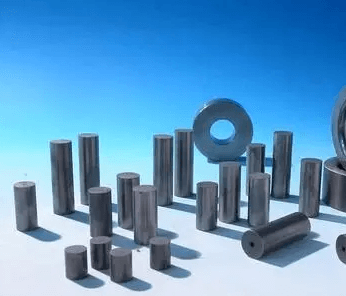The manufacturing of cutting tools, especially those crafted from hard alloys, demands precision and innovation to meet the demands of various industries. Circular Diamond Wire Cutting has emerged as a transformative technology, introducing a new level of accuracy and efficiency in the machining of hard alloys.
Introduction:
Hard alloys, characterized by their exceptional hardness, wear resistance, and high-temperature stability, are fundamental in the production of cutting tools for diverse industrial applications. Achieving precision in the machining of hard alloys is essential for the fabrication of high-performance tools. Circular Diamond Wire Cutting has become instrumental in this process, revolutionizing the production of cutting tools through its ability to enhance accuracy and efficiency.
Fundamentals of Circular Diamond Wire Cutting in Hard Alloy Machining:
Circular Diamond Wire Cutting involves the use of a continuous loop of diamond-coated wire, guided in a circular motion, to make precise cuts in materials. When applied to hard alloys, this technique leverages the hardness of the diamond-coated wire to achieve clean and accurate cuts. The circular motion contributes to uniformity in the cutting process, ensuring the intricate shaping of hard alloy components for cutting tools.
Applications in Tool Production:
Circular Diamond Wire Cutting finds critical applications in the manufacturing of cutting tools crafted from hard alloys, including:
a. Carbide Inserts: The technology is employed in shaping carbide inserts, ensuring precise geometries for optimal cutting performance in metalworking and machining applications.
b. End Mills and Drills: Circular Diamond Wire Cutting is utilized in the fabrication of end mills and drills made from hard alloys, providing the necessary precision for efficient material removal.
c. Saw Blades: The cutting technique is applied in shaping saw blades with hard alloy teeth, ensuring accuracy and durability in cutting a variety of materials.
Advantages of Circular Diamond Wire Cutting in Hard Alloy Machining:
a. Precision and Dimensional Accuracy: The use of diamond-coated wire ensures precise cuts, enabling the creation of intricate and accurately dimensioned hard alloy components for cutting tools.
b. Minimized Tool Wear: Circular Diamond Wire Cutting minimizes tool wear, leading to extended tool life and reduced maintenance costs in the production of cutting tools.
c. Versatility: This cutting technique is adaptable to a wide range of hard alloys, supporting diverse applications in tool manufacturing for various industries.
d. Enhanced Surface Finish: The technology contributes to an improved surface finish, reducing the need for additional polishing or grinding steps in the fabrication of cutting tool components.
Challenges and Future Directions:
While Circular Diamond Wire Cutting has proven highly effective in hard alloy machining for tool production, challenges such as optimizing cutting parameters for different tool geometries persist. Ongoing research is focused on refining diamond coatings, exploring advanced cutting strategies, and expanding the technology’s applicability to emerging hard alloy materials.

Hard Alloy Cutting
Conclusion:
Circular Diamond Wire Cutting stands as a pivotal technology in the realm of hard alloy machining for tool production, providing a precise and efficient method for shaping components critical to various industries. Its applications in carbide inserts, end mills, and saw blades underscore its significance in advancing the field of cutting tool manufacturing. As research and development efforts continue, Circular Diamond Wire Cutting is poised to play a crucial role in shaping the future of precision machining in the tool production industry.



